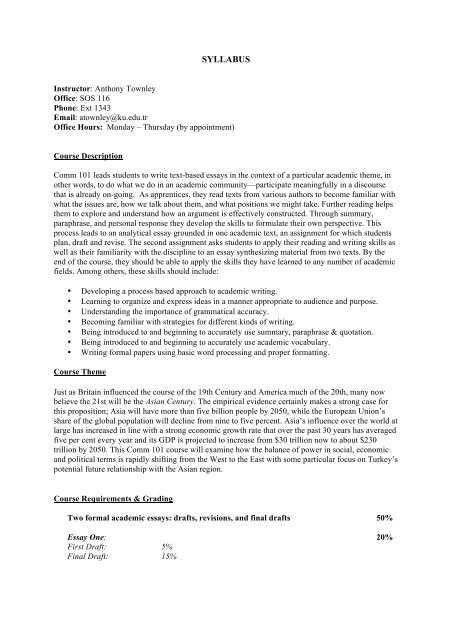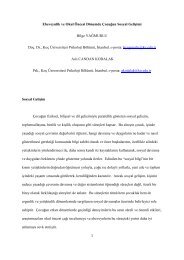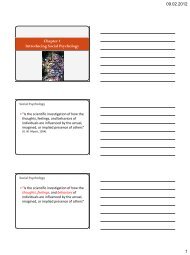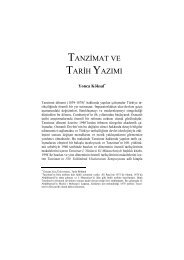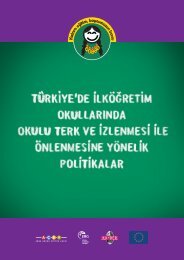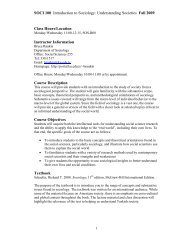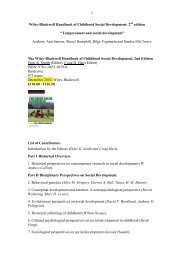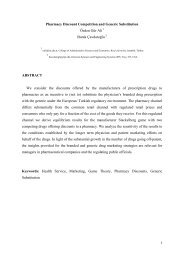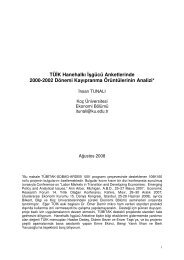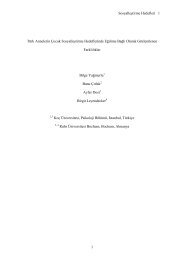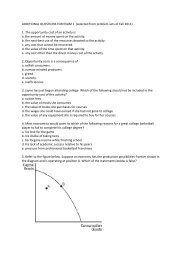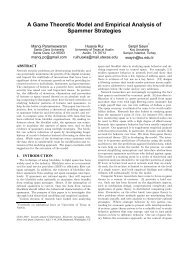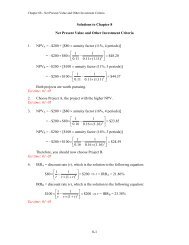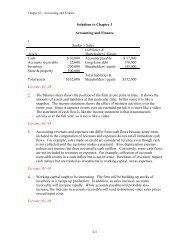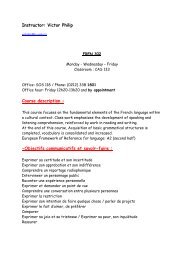Syllabus (pdf) - KUAIS - Koç University
Syllabus (pdf) - KUAIS - Koç University
Syllabus (pdf) - KUAIS - Koç University
Create successful ePaper yourself
Turn your PDF publications into a flip-book with our unique Google optimized e-Paper software.
SYLLABUSInstructor: Anthony TownleyOffice: SOS 116Phone: Ext 1343Email: atownley@ku.edu.trOffice Hours: Monday – Thursday (by appointment)Course DescriptionComm 101 leads students to write text-based essays in the context of a particular academic theme, inother words, to do what we do in an academic community—participate meaningfully in a discoursethat is already on-going. As apprentices, they read texts from various authors to become familiar withwhat the issues are, how we talk about them, and what positions we might take. Further reading helpsthem to explore and understand how an argument is effectively constructed. Through summary,paraphrase, and personal response they develop the skills to formulate their own perspective. Thisprocess leads to an analytical essay grounded in one academic text, an assignment for which studentsplan, draft and revise. The second assignment asks students to apply their reading and writing skills aswell as their familiarity with the discipline to an essay synthesizing material from two texts. By theend of the course, they should be able to apply the skills they have learned to any number of academicfields. Among others, these skills should include:• Developing a process based approach to academic writing.• Learning to organize and express ideas in a manner appropriate to audience and purpose.• Understanding the importance of grammatical accuracy.• Becoming familiar with strategies for different kinds of writing.• Being introduced to and beginning to accurately use summary, paraphrase & quotation.• Being introduced to and beginning to accurately use academic vocabulary.• Writing formal papers using basic word processing and proper formatting.Course ThemeJust as Britain influenced the course of the 19th Century and America much of the 20th, many nowbelieve the 21st will be the Asian Century. The empirical evidence certainly makes a strong case forthis proposition; Asia will have more than five billion people by 2050, while the European Union’sshare of the global population will decline from nine to five percent. Asia’s influence over the world atlarge has increased in line with a strong economic growth rate that over the past 30 years has averagedfive per cent every year and its GDP is projected to increase from $30 trillion now to about $230trillion by 2050. This Comm 101 course will examine how the balance of power in social, economicand political terms is rapidly shifting from the West to the East with some particular focus on Turkey’spotential future relationship with the Asian region.Course Requirements & GradingTwo formal academic essays: drafts, revisions, and final drafts 50%Essay One: 20%First Draft: 5%Final Draft: 15%


